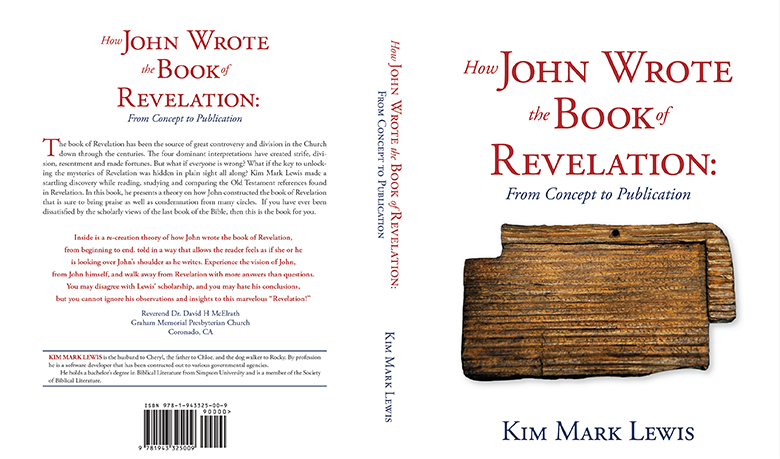Book(s)

The most exhaustive book on the Revelation Draft Hypothesis (RDH) is my book: How John Wrote the Book of Revelation: From Concept to Publication. The book is 380 pages in length providing the first three approximation drafts of the book as well as the method in how the drafts were derived. It is the first book to chronical the practice of writing scripture detailing how John wrote Revelation from the first line to the last parallel.
If you explore this site you will get a taste of what How John Wrote the Book of Revelation covers. The book goes beyond merely the citing of source material but recreates the process and methods used it its writing. It is like looking over John's shoulders as he wrote the book of Revelation.
Reviews by Scholars in the Field
Robert M. Price
Robert M. Price is an independant thinker who has dedicated much of his life to the study of scripture. He is the host of the Bible Geek webcast and was the editor of the Journal of Higher Criticism from 1994 to 2003.
He holds two PhDs from Drew University, Systematic Theology (1981) and New Testament (1993), and a MTS in New Testament from Gordon-Conwell Theological Seminary.
Kim Mark Lewis’ book How John Wrote the Book of Revelation: From Concept to Publication is itself a revelation! How nobody else ever came up with this I don’t know. It seems so obvious once he points it out! The author frames a new approach, a new methodology, enabling us to discern distinct stages of composition in the Apocalypse of John. Sure, the late, great Raymond E. Brown outlined a series of stages in the composition of John’s Gospel, but that’s not what’s new and compelling here. Essentially it’s this: All careful readers know that Revelation is not simply an eyewitness account of a series of mind-blasting visions. That is a fictive premise. That doesn’t mean it’s some kind of fraud; that’s just part of the literary genre of an apocalypse, of which there are many, both ancient (e.g., Daniel, 4 Ezra, the Apocalypse of Peter) and modern (e.g., Dante’s Divine Comedy and Dickens’s A Christmas Carol). Revelation is instead a fantastically elaborate tapestry woven with threads borrowed from many biblical books, especially Ezekiel, Zechariah, and Daniel. Yes, that quickly becomes evident to the serious reader. What Kim has done is to distinguish broken patterns in the text. That is, he zeroes in on all the allusions/quotations from any single Old Testament source text and is able to show how these verses look as if they were used by the author to create, e.g., a chiasm, a ABC-C’B’A’ pattern, an initial sequence of words and ideas counting down, then counting back up again. (This is a common stylistic device in the New Testament.) But it only works in Revelation once you isolate the relevant verses. And the fact that it does work implies it is no coincidence, and that the intervening material must have been a subsequent addition by the same author, expanding his book. He was willing to sacrifice his original structural flourishes to accommodate new Old Testament material appropriate to the context. This material, too, may have been laid out in new patterns. In a still subsequent stage of revision, the author will have again felt free to obscure his previous structures in favor of the intended content.
This would have been much easier if John of Patmos had had access to a computer! But he didn’t. He couldn’t even have flipped back and forth between Old Testament passages to compare them, since there weren’t yet bound collections of biblical books like our modern Bibles. So how on earth did he manage it? Lewis explains how ancient writers often employed reusable wax writing tablets, placing them side by side. These would have contained earlier drafts of Revelation, simplifying his redactional task.
The technique Lewis sets forth enables us not only to track the progress of the Revelator’s work; by doing so, he is also able to demonstrate the evolution of major themes in the book. We do this all the time in redaction criticism of the gospels, comparing Mark’s text with Matthew’s and Luke’s rewrites of it. In this way, e.g., we can trace the progress of Christology from one gospel to another. Lewis enables us to make such comparisons between editions of a single work by a single author. The analytical tool he has fashioned in this book may prove to be of great value in reconstructing the composition history of other biblical writings as well. I can’t wait to see the results of that!